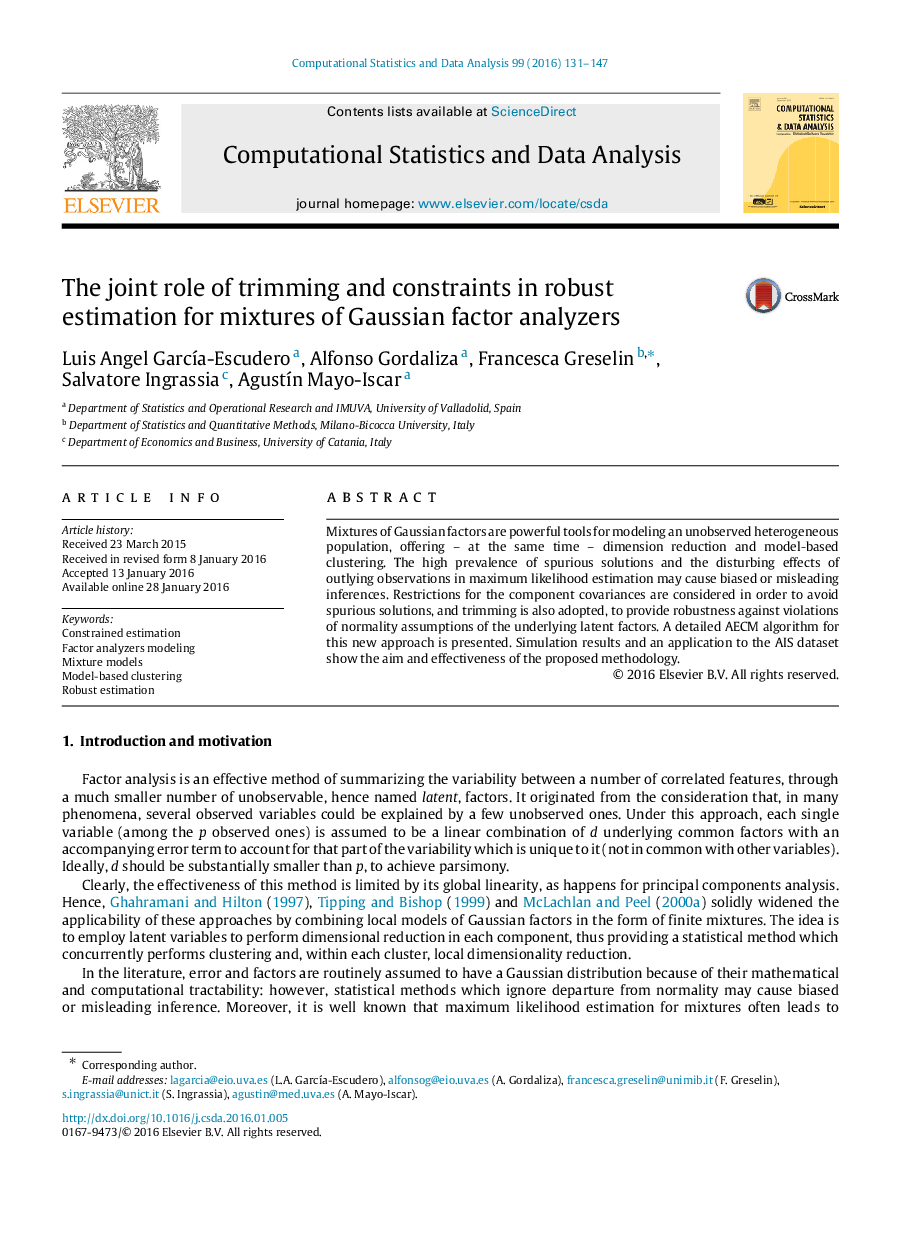| Article ID | Journal | Published Year | Pages | File Type |
|---|---|---|---|---|
| 6869297 | Computational Statistics & Data Analysis | 2016 | 17 Pages |
Abstract
Mixtures of Gaussian factors are powerful tools for modeling an unobserved heterogeneous population, offering-at the same time-dimension reduction and model-based clustering. The high prevalence of spurious solutions and the disturbing effects of outlying observations in maximum likelihood estimation may cause biased or misleading inferences. Restrictions for the component covariances are considered in order to avoid spurious solutions, and trimming is also adopted, to provide robustness against violations of normality assumptions of the underlying latent factors. A detailed AECM algorithm for this new approach is presented. Simulation results and an application to the AIS dataset show the aim and effectiveness of the proposed methodology.
Related Topics
Physical Sciences and Engineering
Computer Science
Computational Theory and Mathematics
Authors
Luis Angel GarcÃa-Escudero, Alfonso Gordaliza, Francesca Greselin, Salvatore Ingrassia, AgustÃn Mayo-Iscar,
